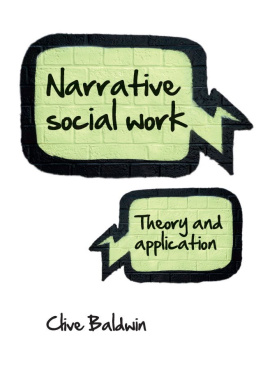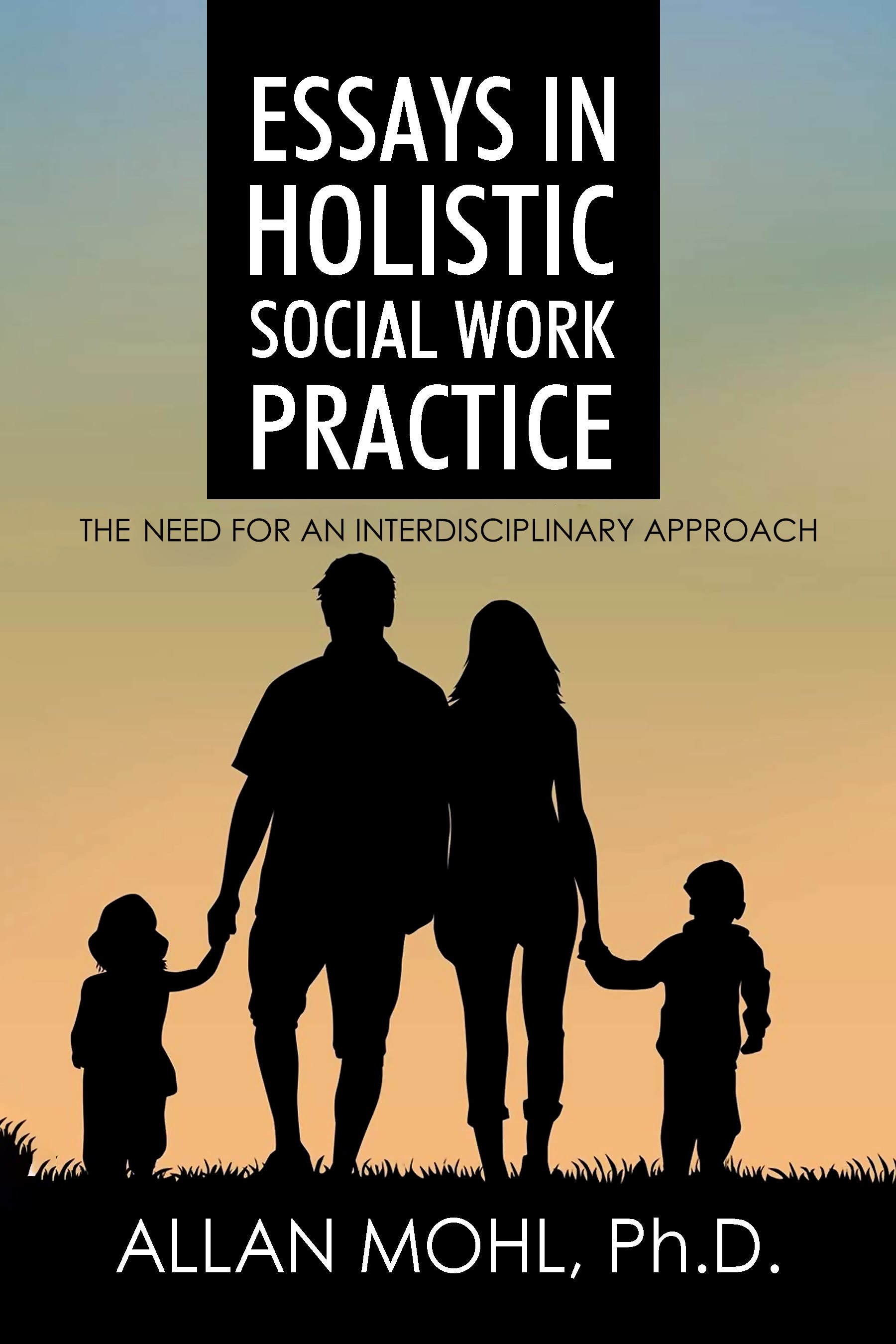ESSAYS IN HOLISTIC
SOCIAL WORK PRACTICE
ESSAYS IN HOLISTIC
SOCIAL WORK PRACTICE
THE NEED FOR AN INTERDISCIPLINARY APPROACH
by
Allan Mohl, Ph.D.

Essays In Holistic Social Work Practice by Allan Mohl, Ph.D.
This book is written to provide information and motivation to readers. Its purpose isnt to render any type of psychological, legal, or professional advice of any kind. The content is the sole opinion and expression of the author, and not necessarily that of the publisher.
Copyright 2020 by Allan Mohl, Ph.D.
All rights reserved. No part of this book may be reproduced, transmitted, or distributed in any form by any means, including, but not limited to, recording, photocopying, or taking screenshots of parts of the book, without prior written permission from the author or the publisher. Brief quotations for noncommercial purposes, such as book reviews, permitted by Fair Use of the U.S. Copyright Law, are allowed without written permissions, as long as such quotations do not cause damage to the books commercial value. For permissions, write to the publisher, whose address is stated below.
ISBN: 978-1-953584-48-9 (Paperback)
ISBN: 978-1-953584-49-6 (Hardback)
ISBN: 978-1-953584-47-2 (E-book)
Printed in the United States of America
Lime Press LLC
425 West Washington Street Suite 4
Suffolk, VA 23434 US
https://www.lime-press.com/
CONTENTS
I Current Trends in the Understanding of
the Etiology of Criminal Behavior From
a Bio-Psychosocial Perspective
Abstract
Introduction
Biological factors
Psychological factors
Social factors
Theories of Social Stress
Cultural Transmission of Deviance
Social-bond Theory
Significance of Findings
Developing a Domestic Violence Model
in a Community Based Agency in the
South Bronx
Abstract
Introduction
Development of a Domestic
Violence Project
The Applicant Organization
Project Objectives and Goals
Casefinding or Assessment
Case Management
Therapy and Ongoing Counseling
Community Education
Conclusion
A Concept Paper on a Parent Training
and Self Help Program at TIP
Neighborhood Home
Abstract
Introduction
Preliminary Report on TIPs Family
Care Project
Abstract
Introduction
Background and Statement of
the Problem
The Objectives
Methodology/Approach
Results
Limitations of Demonstration
Recommendation
Sexual Abuse of the Child: A Treatment
Model for the Incestuous Family
Abstract
Introduction
The Incest Treatment Unit of QSPCC
The Dynamics of Child Sexual Assault
The Secrecy Phase
The Disclosure Phase
Validating the Complaint
Psychological Test
The Engagement Process - The Question
of Intervention
Treatment - Possibilities for Success
Family Treatment Goals
In Conclusion
Abstract
Introduction
Behavior Modification
The Unit System
Results of Program
The Traditional Unit Model: Advantages
and Disadvantages for Child Care Staff
Abstract
Introduction
The Unit Model
The Child Care Counselor and the Team Approach
Conclusion
Stimuli and Milieu Therapy in a
Geriatric Setting
Abstract
Introduction
Description of Ward 4B
Expanded Services of the
Demonstration Project
Program Observations
Implications
Conclusion: An Ecosystems Concept
in the Practice of Social Work
Abstract
Introduction
The Ecosystems Approach
Summary of Observations
Conclusion
CHAPTER I
Introduction:
An Epidemiological Focus
The following Project covers many years of experience. What this author has attempted to do is to present theoretical and pragmatic treatment models which have evolved from 18 years of experience in various social service settings.
They reflect an epidemiological focus which is a systems approach to treatment and the boundaries to be worked on can vary from a family to an entire community.
This Independent Study Project is based on the assumption that the professions survival is dependent on its adaptability and accountability and this carries implications for practice. The fragmented use of methodologies, meanings and manpower are too often subject to whim, personal and professional bias, and often to what is thought of as professional self-interest. Ironically, this self-interest has not proved to be well-served considering public attitudes toward social work services, limited social work job opportunities, uneven successes in licensing, declassification of social work positions and rapidly decreasing funds for social work education. Even considering the terrible social attitudes and political behavior in the country in these difficult times, social works troubles may also be attributable to its lack in accountability. It may be necessary for social workers to challenge the historic ways of viewing practice to better assure their future.
As Bartlett and others have pointed out, the history of social work practice is really a history of method or technical development. Richmond herself recommended, for example, that caseworkers go to work in private family agencies so that they could select their clients for the purpose of developing and refining the casework method. With all due deference, that advice did little to alert caseworkers to professional accountability. Methods and skills became equated with practice and even with social work. The honing of methods became an end as well as a means. Proliferating methods and skills became central in the professional education curriculum, and methods even became the primary focus of researchers, who continually seek to find out whether and how they work. Inventions of new methods continue, and students cry for more skills.
In essence, social workers must be able to recognize that linkage with other disciplines and with different agencies and services are essential in treating the total individual. This invariably entails a macrosystemic approach in order to help individuals in that the practitioner is working with a multiplicity of systems which are linked to each other and which effect the individual client.
The many-tiered crises of the 1960s generated many changes in social work in the 1970s and 80s. Perhaps foremost among these were conceptual changes. Beginning in 1970, practice materials began to appear as social work, instead of casework, group work, family treatment, and community organization approaches. This was more than a semantic difference. The intention was to assume a professional stance, based on knowledge as well as skills, in regard to what social work was doing, to focus at last on the phenomena, the substance of the professional commitment, and to allow these phenomena to determine the most suitable methodology to be used. As Bartlett said so clearly in The Common Base of Social Work Practice , the situation will generate the tasks to be accomplished, and no longer did social work have to be imprisoned in its methodological perspectives. For all those years social work had been offering its well-honed methods to those who could use them instead of first finding out what was needed and then selecting the method from its repertoire or inventing new methods.









